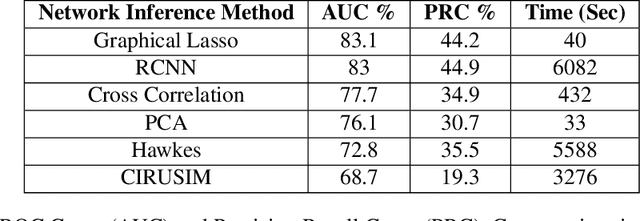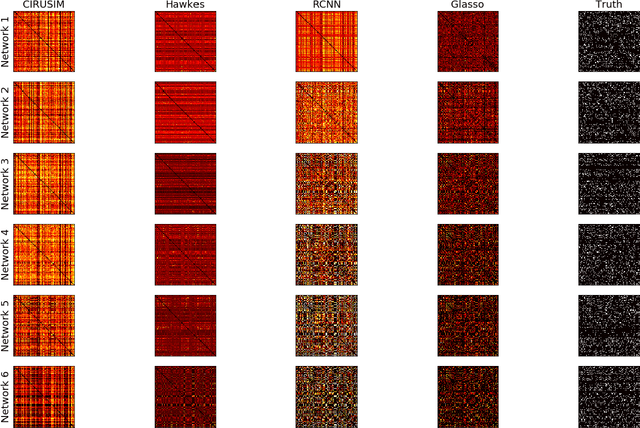A Review of Network Inference Techniques for Neural Activation Time Series
Paper and Code
Jun 20, 2018


Studying neural connectivity is considered one of the most promising and challenging areas of modern neuroscience. The underpinnings of cognition are hidden in the way neurons interact with each other. However, our experimental methods of studying real neural connections at a microscopic level are still arduous and costly. An efficient alternative is to infer connectivity based on the neuronal activations using computational methods. A reliable method for network inference, would not only facilitate research of neural circuits without the need of laborious experiments but also reveal insights on the underlying mechanisms of the brain. In this work, we perform a review of methods for neural circuit inference given the activation time series of the neural population. Approaching it from machine learning perspective, we divide the methodologies into unsupervised and supervised learning. The methods are based on correlation metrics, probabilistic point processes, and neural networks. Furthermore, we add a data mining methodology inspired by influence estimation in social networks as a new supervised learning approach. For comparison, we use the small version of the Chalearn Connectomics competition, that is accompanied with ground truth connections between neurons. The experiments indicate that unsupervised learning methods perform better, however, supervised methods could surpass them given enough data and resources.
 Add to Chrome
Add to Chrome Add to Firefox
Add to Firefox Add to Edge
Add to Edge